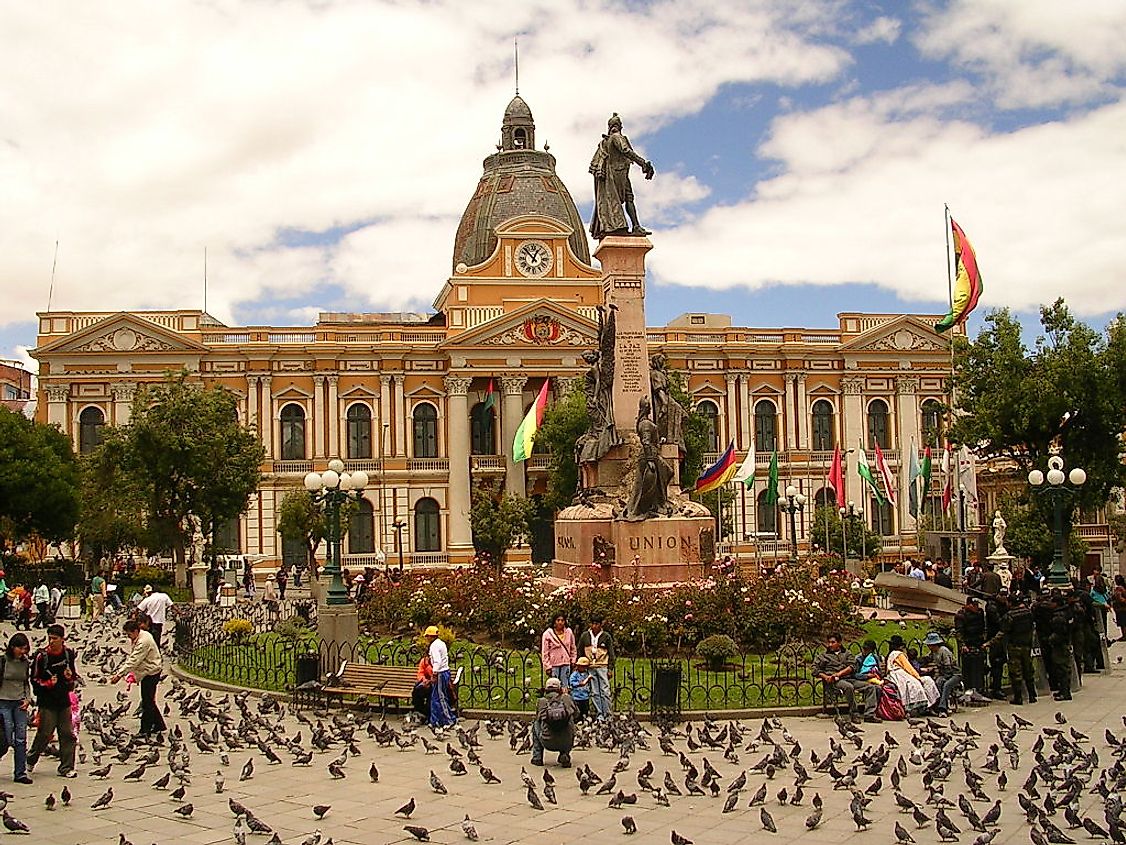What Type Of Government Does Bolivia Have?

Bolivia, a landlocked country located in South America, carries out its government via a presidential representative democratic republic. Under this political framework, the President is both the Head of State and the Head of Government. In October of 2008, the President, a member of the Movement Toward Socialism (MAS) party, worked with other party members to write a new text for the country’s constitution. Congress accepted the draft and constitutional reform went to the public vote in January of 2009. In this election, approximately 60% of the population voted to adopt the new Constitution.
This country is divided into 9 geographical departments, which are administered by governors. These governors were previously appointed by the President of Bolivia, however, since 2005, the decision has been given to the public via popular vote elections. The system of government in Bolivia is divided into the following branches: legislative, executive, judicial, and electoral. This article takes a closer look at each of these branches.
Executive Branch Of The Government Of Bolivia
The executive branch of the government in Bolivia is led by the President, who is elected by popular vote to serve a 5-year term. During presidential elections, a candidate must earn a majority vote in order to take office. If that does not happen, Congress will choose a president out of the two most popular candidates of those running.
The President of Bolivia oversees 21 ministries, which make up the executive branch. The Executive Cabinet is made up of the heads of each of the ministries (the Ministers). These ministries include the Ministry of: Foreign Affairs, Defense, Government, Education, Autonomy, Economy and Finance, Justice, and Health (to name a few). It is the responsibility of the President and the Ministers to carry out the laws passed by the legislative branch of government.
Legislative Branch Of The Government Of Bolivia
The legislative branch is made up of the Chamber of Senators and the Chamber of Deputies. The Chamber of Senators consists of 36 members, who are elected into office based on proportional representation of a list of specific political parties. Each senator is elected to serve a 5-year term. The Chamber of Deputies consists of 130 representatives. Of these seats, 70 are elected by their district, 63 are elected in the same manner as senators, and 7 are elected by indigenous people of the majority of departments of Bolivia.
This branch of government is responsible for debating, creating, and enacting new laws and regulations for the executive branch to carry out.
Judicial Branch Of The Government Of Bolivia
The judicial branch of government is responsible for the legal system of Bolivia, ensuring that laws and regulations are being carried out as the legal language intended when written. The legal system employed here is based on Spanish Law (the previous colonizers) and Napoleonic Code. Legal decisions take place throughout a number of courts, including: the departmental and lower courts, the Agrarian and Environmental Tribune, the Judiciary Council, the Constitutional Tribunal, and the Supreme Court. Congress appoints the Supreme Court judges to serve 10-year terms
Electoral Branch Of The Government Of Bolivia
The electoral branch, also known as the Plurinational Electoral Organ, was enacted in 2010 to replace the National Electoral Court. It is considered an independent arm of the national government system. It is made up of electoral notaries, election table juries, electoral judges, 9 Departmental Electoral Tribunals, and the Supreme Electoral Tribunal. This branch of government is responsible for managing the election processes throughout the country.











